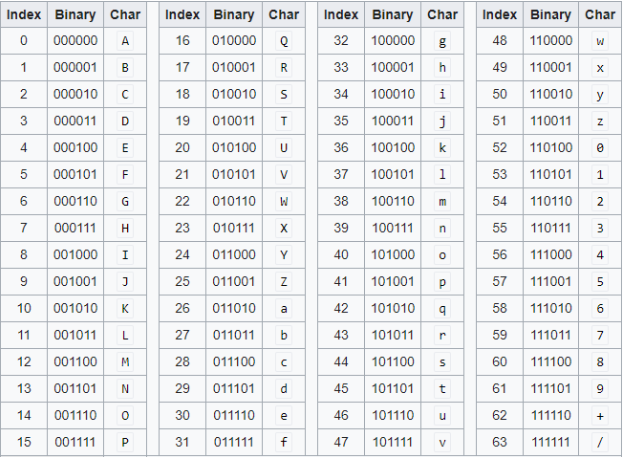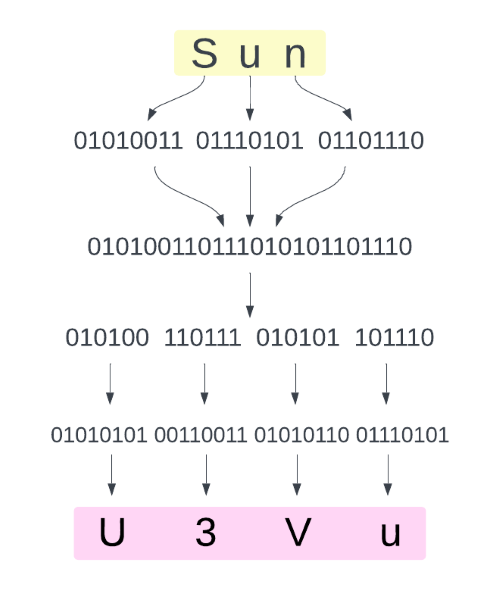Introduction:
JavaScript encodes binary image data to Base64 strings and decodes Base64 strings to binary images for transmission and storage. This process is crucial for various applications, such as embedding images directly into HTML documents, sending images over the network, or storing images in databases. In this blog, we will learn how to convert Base64 to Image and vice versa in JavaScript.
Use cases of base64 image:
Base64 encoding for images in JavaScript serves various use cases, including:
- Sending Images to Servers: Base64 encoding simplifies image transmission over text-based protocols such as HTTP by converting images to strings.
- Embedding Images: Embedding Base64-encoded images in HTML or CSS files reduces HTTP requests required for page loading.
- Storing Images in Databases: Converting images to Base64 strings enables storing them directly in databases, simplifying image management and retrieval.
- Displaying Images Dynamically: Base64-encoded images enhance user experience by dynamically displaying on webpages without separate files.
- Sharing Images in Text Formats: Base64-encoded images retain their styling, enabling easy sharing in text formats for diverse applications.
These use cases highlight the flexibility and efficiency of using Base64 encoding for handling images in web development.
What is Base64?
Base64 encoding is a method for converting binary data into ASCII text, which is particularly useful for transmitting binary data, such as images, over text-based protocols like HTTP, SMTP, or FTP. This encoding ensures that the binary data remains intact without modification during transport, making it a reliable method for embedding images directly into HTML documents, storing them in databases, or sending them via email.
How Base64 Encoding Works:
- Binary Data to Base64 String: To encode and decode binary data efficiently, divide it into 6-bit groups, converting each group to one of 64 characters (A-Z, a-z, 0-9, +, /, =). This character set enables easy transmission and storage of data.
- Base64 String Representation: The Base64 string includes a media type prefix and encoded data. The browser decodes Base64 to binary and renders an image. The string is embeddable in HTML/CSS and transmittable over the network.
- Decoding the Base64 String: The browser decodes the Base64 string into binary data by reversing encoding, converting each character to a 6-bit binary value, and then rendering the binary as an image.
Converting an Image to a Base64 String
To convert an image to a Base64 string, you can use the FileReader API in JavaScript. This API allows you to read the contents of files (or raw data buffers) stored on the user’s computer. Here’s a step-by-step guide on how to achieve this:
1. HTML Setup: First, create an HTML file with an input element of type file to allow users to select an image file.
<!DOCTYPE html>
<html>
<head>
<title>Convert Image to Base64</title>
</head>
<body>
<input type="file" id="imageFile" onchange="convertImageToBase64()">
<button onclick="displayBase64()">Display Base64 String</button>
<script src="script.js"></script>
</body>
</html>
2. JavaScript Implementation: In your JavaScript file (script.js), implement the convertImageToBase64 function to read the selected file and convert it to a Base64 string.
let base64String = "";
function convertImageToBase64() {
let file = document.getElementById('imageFile').files[0];
let reader = new FileReader();
reader.onload = function() {
base64String = reader.result.replace("data:", "").replace(/^.+,/, "");
console.log(base64String);
}
reader.readAsDataURL(file);
}
function displayBase64() {
alert(base64String);
}
Output:

This code listens for a file selection event on the input element. When a file is selected, it reads it as a Data URL, a Base64-encoded string representing the file’s data. The replace method is used to remove the prefix (data:image/png;base64,) from the Base64 string, leaving only the encoded data.
Converting a Base64 String to an Image:
To convert a Base64 string to an image in JavaScript, you can create an Image object and set its src Attribute to the Base64 string. This method is straightforward and does not require any external libraries. Here’s how you can do it:
Step 1: Prepare Your HTML: First, ensure you have an HTML element where you want to display the image. This could be a img tag with a specific id that you can reference in your JavaScript code.
<!DOCTYPE html>
<html>
<head>
<title>Base64 to Image</title>
</head>
<body>
<img id="displayImage" src="" alt="Converted Image">
<script src="script.js"></script>
</body>
</html>
Step 2: JavaScript Implementation: In your JavaScript file (script.js), you can write a function to convert a Base64 string to an image and display it. Here’s an example function:
function displayImageFromBase64(base64String) {
// Create a new Image object
var image = new Image();
// Set the source of the image to the Base64 string
image.src = 'data:image/png;base64,' + base64String;
// Append the image to the img teg
document.getElementById("displayImage").src = image.src;
}
You need to call this function with a Base64 string as its argument for using it. For demonstration purposes, let’s assume you have a Base64 string of an image. You can call the function like this:
var base64String = 'iVBORw0KGgoAAAANSUhEUgAAAAUAAAAFCAYAAACNbyblAAAAHElEQVQI12P4//8/w38GIAXDIBKE0DHxgljNBAAO9TXL0Y4OHwAAAABJRU5ErkJggg=='; // Example Base64 string displayImageFromBase64(base64String);
Output:

This method efficiently displays images directly from Base64 strings without needing to upload or save the image to a server. It’s particularly useful for scenarios where you must display images generated or modified on the client side.
What are some limitations of converting base64 to images in JavaScript?
Converting Base64 to images in JavaScript can have some limitations, such as:
- Increased file size: Base64-encoded images are larger than the original images due to the additional encoding overhead. This can lead to slower download times and increased bandwidth usage.
- Decoding overhead: When the browser decodes the Base64-encoded image, it first needs to decode the Base64 string and then decode the image itself, introducing an extra layer of unnecessary work. This can result in slower rendering times, especially for large images.
- Caching issues: Base64-encoded images may not always be cached effectively, leading to slower load times and increased server load.
- Compatibility issues: While Base64 is widely supported, there might be some cases where the encoded images are not displayed correctly or supported by certain browsers or devices.
- Performance impact: Base64 encoding and decoding can be CPU-intensive, especially for large images. This can lead to slower app performance and a less smooth user experience.
Despite these limitations, converting Base64 to images in JavaScript can be useful in certain situations, such as when you need to optimize the load time of your website or when you have specific requirements for handling images in your application. However, it is essential to carefully evaluate the benefits and trade-offs before implementing this approach in your projects.
Conclusion:
Converting data between images in Base64 and JavaScript is a valuable skill for web developers. Whether you’re dealing with image uploads, dynamic processes, or other data manipulation, understanding these transformation processes will increase your ability as you incorporate these processes into your projects. With it, you will find easy data transformation at your fingertips. Good luck with the coding that helps create complex and interesting web applications!
FAQ:
1. How to convert Base64 data to an image in JavaScript?
Create an Image object set its src to the Base64 string prefixed with data:image/png;base64,, and append it to the document body.
2. How to convert from Base64 to image?
To convert a Base64 string to an image in JavaScript, create an Image object set its src attribute to the Base64 string, including the data:image... part, and append it to the document body or a specific element.
3. How to convert local image to Base64 in JavaScript?
Use the FileReader API to read a local image file as a Data URL, then extract the Base64 string from the Data URL.
4. How to decode image from Base64 in node js?
To decode a Base64 image in Node.js, use the Buffer.from() method to convert the Base64 string to a buffer, then write the buffer to a file using fs.writeFileSync().




Leave a Comment